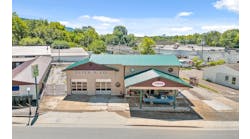On Dec. 5, when Caliber Collision and ABRA announced they had entered into an agreement to merge, it opened eyes throughout the collision repair industry.
The transaction seemingly tilted a $47 billion industry on its axis, considering it united two of the largest collision repair companies in the country. The new, combined company, which will operate under the Caliber brand, equated to more than 1,000 U.S. stores.
“... With the flexibility and convenience that come with the broadest geographic coverage in the United States and a full suite of services,” noted Caliber CEO Steve Grimshaw in a press release, “we’re confident the technological and operational investments will create unparalleled customer service.”
The sheer magnitude of the merger was attention-grabbing, considering the combined company will feature locations spread across 37 states.
Clearly, the entire collision repair industry took note. To wit:
- “With this merger, their share that they control is probably pushing 10 percent—in a metro market it might be pushing 20 percent,” says Erick Bickett, the CEO of Fix Auto. “What it means to the industry is they bring tremendous resources.”
- “It certainly continues to be interesting and evolving times in our industry,” notes Michael Macaluso, the president of CARSTAR North America.
- “I am convinced an independent repair business will [now] have to raise the bar in marketing their business as local community members that care,” says Jeff Peevy, the president of the Automotive Management Institute.
The Power of Networks with Scale
Bickett, who, incidentally, was one of the founders of Caliber in 1991, feels the combined Caliber and ABRA business will have immense strength in numbers.
“Think about it this way,” Bickett explains. “Take some of our biggest problems [as an industry] and that’s training and bringing people into the business. The average shop spends very little on that; the average, single shop maybe spends 1 percent of revenue on that one project. If you [multiply] 1 percent times 1,000 shops, all of a sudden you have a nice budget.
“And that’s just one facet of it. If you take that up a couple notches to the scale they’re able to create with their buying power, and all that sort of stuff, it just puts them at that much more of a competitive advantage.”
The ABRA-Caliber merger also brings with it an interesting array of insurance ramifications, according to industry insiders.
“The thing, relative to the insurance companies, that’s interesting,” Bickett says, “is the OE coming in and now having some influence—more and more influence as to who fixes the cars. Caliber, out of all of them, has probably embraced that more than any, in terms of their dealer relationships and their OE strategies. So, you see that dynamic shift to the control of how the cars are getting into the shop, and now you’ve got a player that, in many markets, is over a 20 percent share.
“I would think insurers would start to get a little nervous about being too highly leveraged that way.”
One positive that the new, collision repair supergiant could enjoy, though, is offering insurers a single-point of contact for countless shops.
Pressure Applied to Competitors
Following the ABRA-Caliber merger, the new company figures to be able to offer employees compensation that independents and even many MSOs will be hard pressed to duplicate.
“As they improve their scale, their buying power, and solidify their position financially like they have done,” Bickett notes, “they actually can offer better benefits, and be more attractive for employees.”
Says Peevy: “My greatest concern is in employee recruitment and retention for independents; it will become increasingly difficult for independents to compete with offering benefits that match these mega MSOs.”
The ABRA-Caliber transaction is expected to officially close in early 2019.
In the meantime, consolidation should continue among the collision repair industry’s biggest players. CARSTAR’s Macaluso, for one, acknowledged that the ABRA-Caliber merger may “accelerate,” his company’s plans for growth; as of the beginning of December, CARSTAR had 325 locations in the U.S. and 300 in Canada, and Macaluso said that “by 2021, we want to hit 1,000 locations.”
Most of the industry insiders that FenderBender spoke to said they had heard rumors of a collision repair merger of a large magnitude for a few years. Now, more dominoes are expected to fall, elsewhere in the industry.
“I just think [the ABRA-Caliber merger] is really going to sharpen everybody’s game,” Bickett says. “I think it’ll probably create some frenzy, too. … It might spur some more competition for the acquisitions.
“The competition for grabbing share with somebody that large, that’s got an appetite for pretty rapid growth, could kick up the competition—there’s just a lot of implications.”




